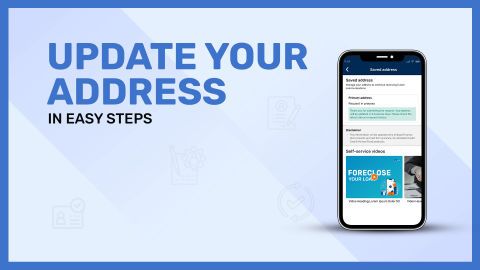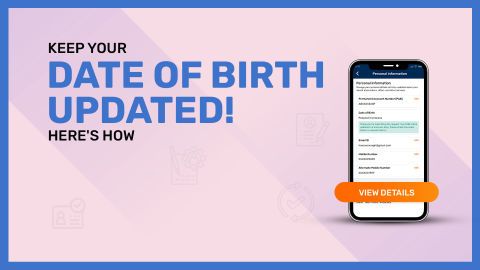Loan settlement is a financial process that offers relief to borrowers struggling to repay their debts. It involves negotiating with the lender to accept a reduced lump-sum payment as a full and final settlement of the outstanding loan. This option is typically considered when the borrower is facing genuine financial hardship due to job loss, illness, or other unforeseen circumstances. While loan settlement can help avoid legal action or further damage to finances, it does come with consequences, most notably, a negative impact on the borrower's credit score. Settlements are often recorded as “settled” rather than “closed,” signalling to future lenders that the loan wasn’t repaid in full. Despite its drawbacks, loan settlement can be a practical solution for individuals who have exhausted all other repayment options. Understanding the process, eligibility, and long-term effects is essential before choosing this path. It's not debt forgiveness, but a strategic compromise during financial distress.
Steps to settle your medical equipment loan
Settling a medical equipment loan can ease financial stress, especially if you're struggling with payments. Here’s a step-by-step guide to help you through the settlement process:
Review your loan agreement
Begin by thoroughly reading your original loan agreement.
Identify key terms such as loan amount, interest rate, repayment tenure, and any applicable penalties for early closure or settlement.
Check if the lender has outlined a policy or criteria for loan settlement in the agreement.
Understand the difference between “foreclosure” (full repayment before tenure) and “settlement” (negotiated lower payoff).
Keep an eye on clauses related to late fees, prepayment charges, or other costs.
Calculate the outstanding loan balance
Get the latest loan statement from your lender, either through their online portal, mobile app, or customer care.
Note the current outstanding principal amount and any interest accrued till date.
Consider pending EMI dues, late fees, or penalties added to your balance.
If you're considering early repayment or negotiation, ask for a loan foreclosure or settlement quote from the lender.
Review this amount and compare it with your available finances.
Contact your lender for settlement options
Reach out to the lender’s loan officer or customer support team to initiate a conversation.
Clearly explain your financial situation—such as business losses, medical expenses, or reduced income.
Request for a one-time settlement offer, which typically involves paying a reduced lump sum to close the loan.
Be honest and cooperative; lenders are more likely to negotiate if they see genuine hardship.
Ask for all offers or agreements in writing, including any waiver of charges, timeline, and impact on your credit score.
In some cases, the lender may offer you structured settlement terms instead of a lump-sum payment.
Pay off the remaining loan amount
Once you agree on the settlement amount, arrange for the funds within the stipulated time.
Make the payment through traceable methods like bank transfer, cheque, or demand draft—avoid cash payments.
After payment, collect a No Dues Certificate (NDC) and a Loan Closure Letter from the lender.
Request a copy of the updated loan account statement showing zero balance.
Monitor your credit report to ensure the account is marked as “settled” or “closed” as per the agreement.
If you notice discrepancies, raise a dispute with the credit bureau and provide necessary documents.
Documents required for settling your medical equipment loan
When you initiate the loan settlement process for your medical equipment loan, proper documentation is crucial. Submitting the right papers ensures a smooth and legally sound settlement. Here’s a list of essential documents typically required:
1. Loan agreement copy
Original or photocopy of the signed loan agreement with the lender.
Helps verify terms, loan amount, and tenure during the settlement discussion.
2. Loan account statement
A detailed statement showing your payment history, outstanding balance, and due dates.
Can be obtained via the lender’s customer portal or branch.
3. Settlement request letter
A formal letter from you requesting loan settlement due to financial hardship.
Should include reasons like medical expenses, income loss, or other valid causes.
Mention your willingness to pay a one-time settlement amount.
4. Identity proof
Government-issued ID such as:
Aadhaar Card
PAN Card
Passport
Voter ID
Required to verify your identity and loan ownership.
5. Address proof
Any one of the following:
Utility bills (electricity, water, etc.)
Rental agreement
Passport
Aadhaar card
Confirms your current residence, especially for correspondence purposes.
6. Income proof or financial hardship evidence
Recent salary slips or bank statements showing reduced income.
Business loss documents, medical bills, or termination letters can also be submitted to prove hardship.
These strengthen your case for a reduced settlement amount.
7. Settlement offer letter from lender
A document issued by the lender confirming the agreed settlement amount and payment deadline.
Must be signed and stamped by an authorised bank officer.
Keep a copy for future reference.
8. Payment receipt or transaction proof
After making the settlement payment, keep a copy of the:
Bank transfer receipt
Cheque/Demand Draft copy
Payment acknowledgment from the lender
9. No Dues Certificate (NDC)
Issued by the lender once the settlement is completed.
Officially confirms that there are no pending dues under the loan account.
10. Loan closure or settlement letter
Final confirmation that the loan is closed under “settled” or “closed” status.
Essential for credit report correction or future loan applications.
Common challenges when settling a medical equipment loan
Settling a medical equipment loan may seem like a quick solution to ease financial pressure, but the process often comes with several challenges. Being aware of these obstacles can help you prepare and navigate the settlement more effectively.
1. Difficulty in getting lender approval
Lenders are not always open to settling loans, especially if repayments are only slightly delayed.
Approval is usually granted only in cases of severe financial hardship or prolonged default.
You may need to provide strong evidence and multiple follow-ups to initiate discussions.
2. Negative impact on credit score
Settled loans are marked as “settled” rather than “closed,” signalling incomplete repayment.
This status significantly lowers your credit score and affects your creditworthiness.
Future lenders may view you as a high-risk borrower.
3. Limited negotiation flexibility
Some lenders may offer a settlement amount that’s still difficult to afford.
There's often little room for renegotiation once the terms are set.
The pressure to arrange a lump-sum payment quickly can be stressful.
4. Lack of proper documentation
Many borrowers fail to collect essential documents like the No Dues Certificate or Settlement Letter.
Without proper proof, you may face future disputes or errors in your credit report.
Missing paperwork can also delay the closure update on your credit profile.
5. Legal and recovery pressure
If your loan is severely overdue, recovery agents or legal notices may be involved.
This adds emotional stress and urgency to the settlement process.
It's important to stay calm and respond with proper documentation and communication.
6. Tax implications (in some cases)
In rare cases, the waived portion of the loan may be treated as income and taxed.
It’s advisable to consult a tax advisor before finalising the settlement.
7. Confusion between foreclosure and settlement
Borrowers often confuse “foreclosure” (full repayment before tenure) with “settlement” (negotiated reduced payment).
Choosing settlement when you can afford foreclosure could unnecessarily harm your credit score.
8. Miscommunication with lender representatives
Inconsistent information from customer service or loan officers can lead to misunderstandings.
Always get communication in writing and request confirmation emails or letters.
Advantages of settling your medical equipment loan early
Settling your medical equipment loan early—whether through foreclosure or a negotiated settlement—can offer several financial and practical benefits. Here are the key advantages:
1. Saves on interest costs
One of the biggest advantages is the reduction in total interest paid.
Early settlement reduces your loan tenure, helping you avoid future interest accrual.
2. Improves financial stability
Eliminating monthly EMI obligations frees up your income for other essential expenses.
It also improves your debt-to-income ratio, enhancing your overall financial health.
3. Reduces financial stress
Carrying debt can cause ongoing stress, especially during uncertain times.
Settling early offers peace of mind and a sense of control over your finances.
4. Protects your credit score (if foreclosed)
If you foreclose your loan by repaying the full balance early, it reflects positively on your credit history.
It shows lenders that you’re a responsible borrower with strong repayment habits.
5. Frees up credit for future use
Closing a loan account early increases your loan eligibility for future needs.
This is helpful if you plan to take a home loan, business loan, or personal loan later on.
6. Avoids legal and recovery action
Early settlement helps you avoid reaching default status, which can lead to legal notices or debt recovery proceedings.
Settling in advance keeps your credit record clean and hassle-free.
7. Easy process via online platforms
Most lenders allow early settlement requests via their customer portal.
You can check your outstanding balance, generate foreclosure letters, and initiate payments online.
8. Access to better financial opportunities
A closed or foreclosed loan increases your attractiveness to banks and NBFCs for future borrowing.
It also improves your chances of getting loans with lower interest rates.
9. Faster asset ownership
If your medical equipment was purchased under a loan agreement, early closure may fast-track your ownership and reduce the risk of repossession.
10. Quick assistance available
For help with the settlement process, you can always reach out to the lender’s team.
For example, you can contact Bajaj Finserv through their Bajaj Finance customer service number for personalised support.
Conclusion
Settling your medical equipment loan early can be a smart financial move, especially if you're aiming to reduce debt and regain control over your finances. While the process involves careful planning, proper documentation, and communication with your lender, the long-term benefits—such as interest savings, reduced financial stress, and improved credit potential—are well worth the effort. Whether you choose to foreclose the loan or negotiate a one-time settlement, always review your loan terms, assess your repayment capacity, and consult customer support when needed.
Loan support made easy—read on




